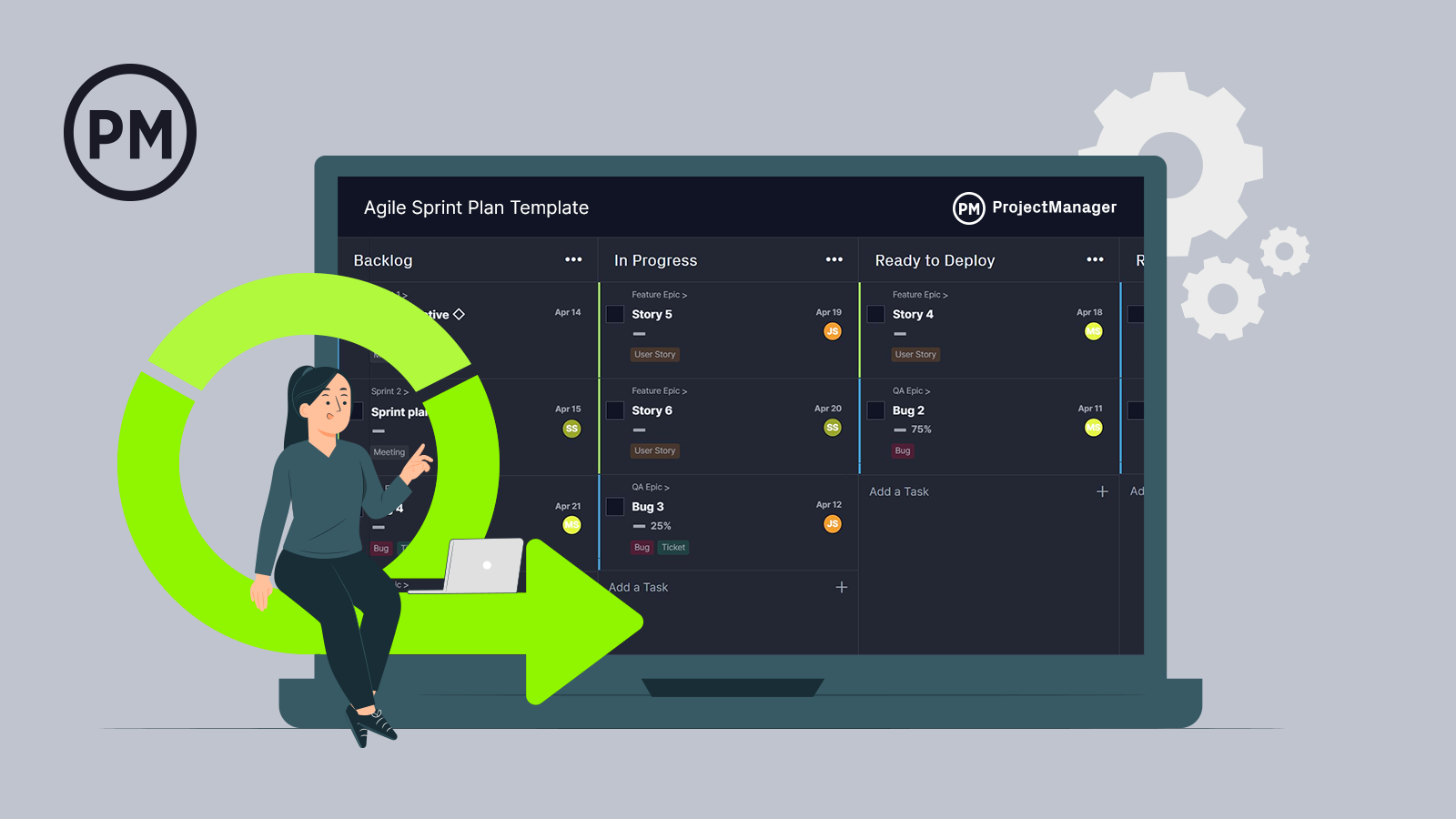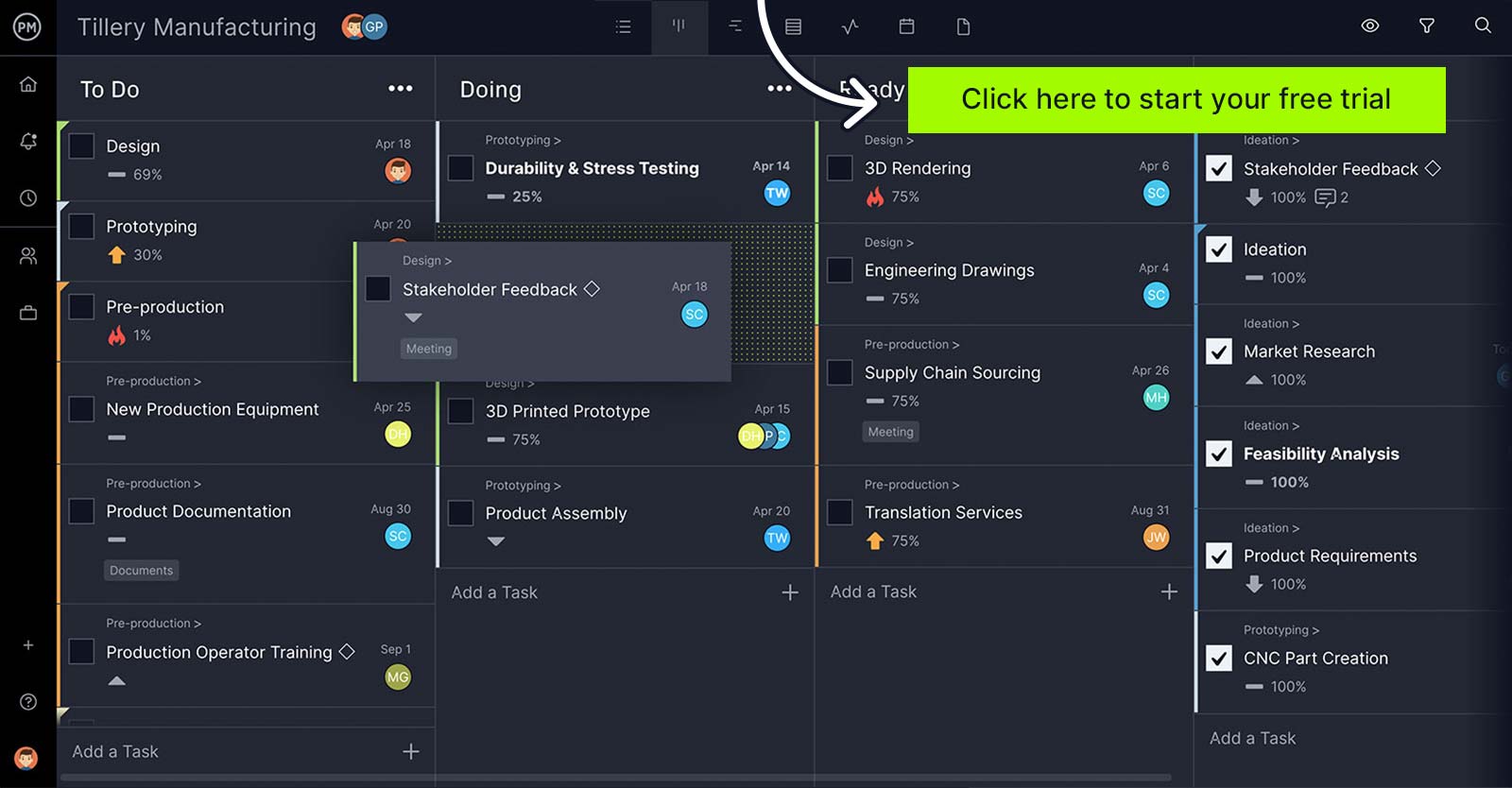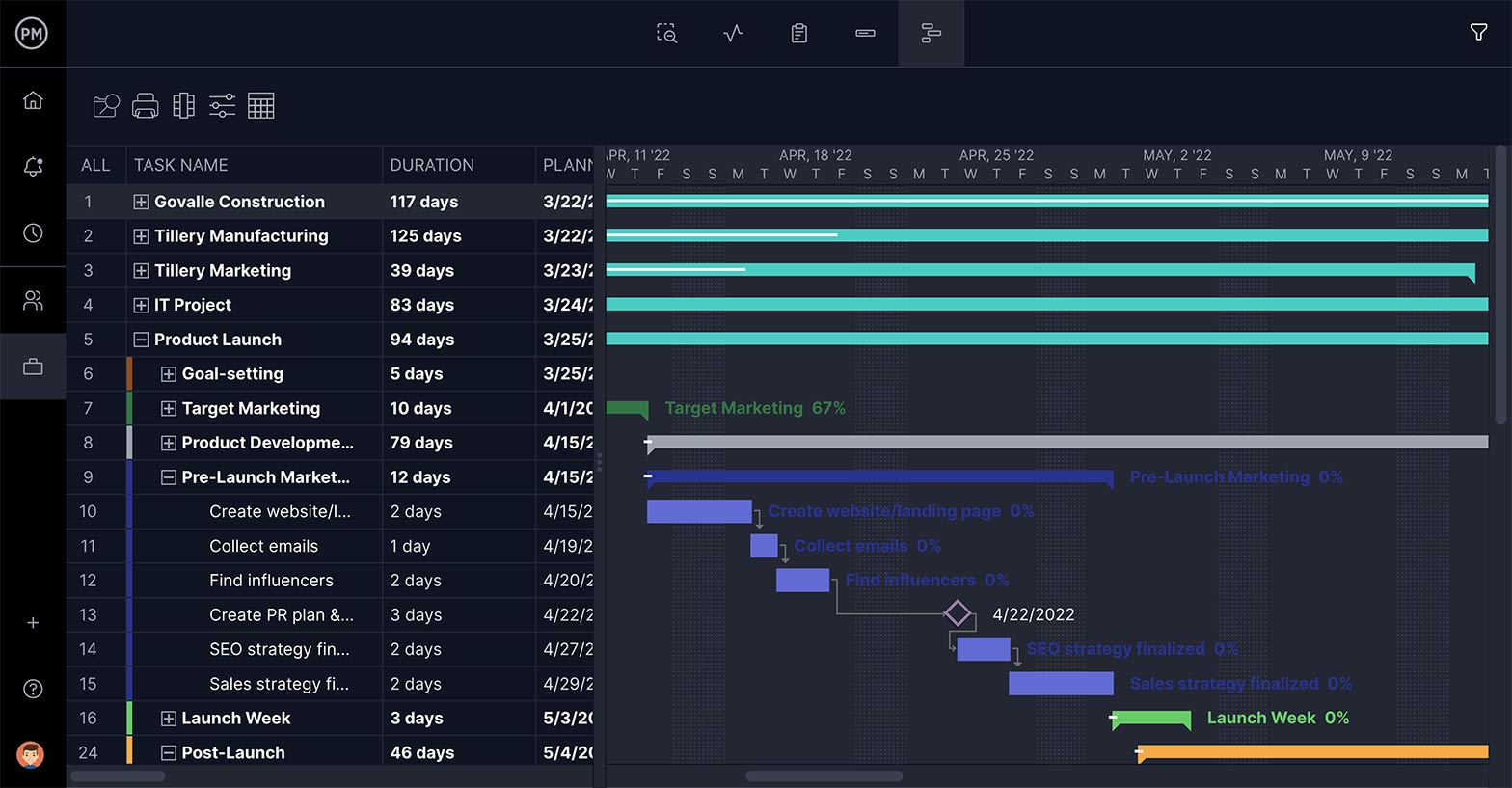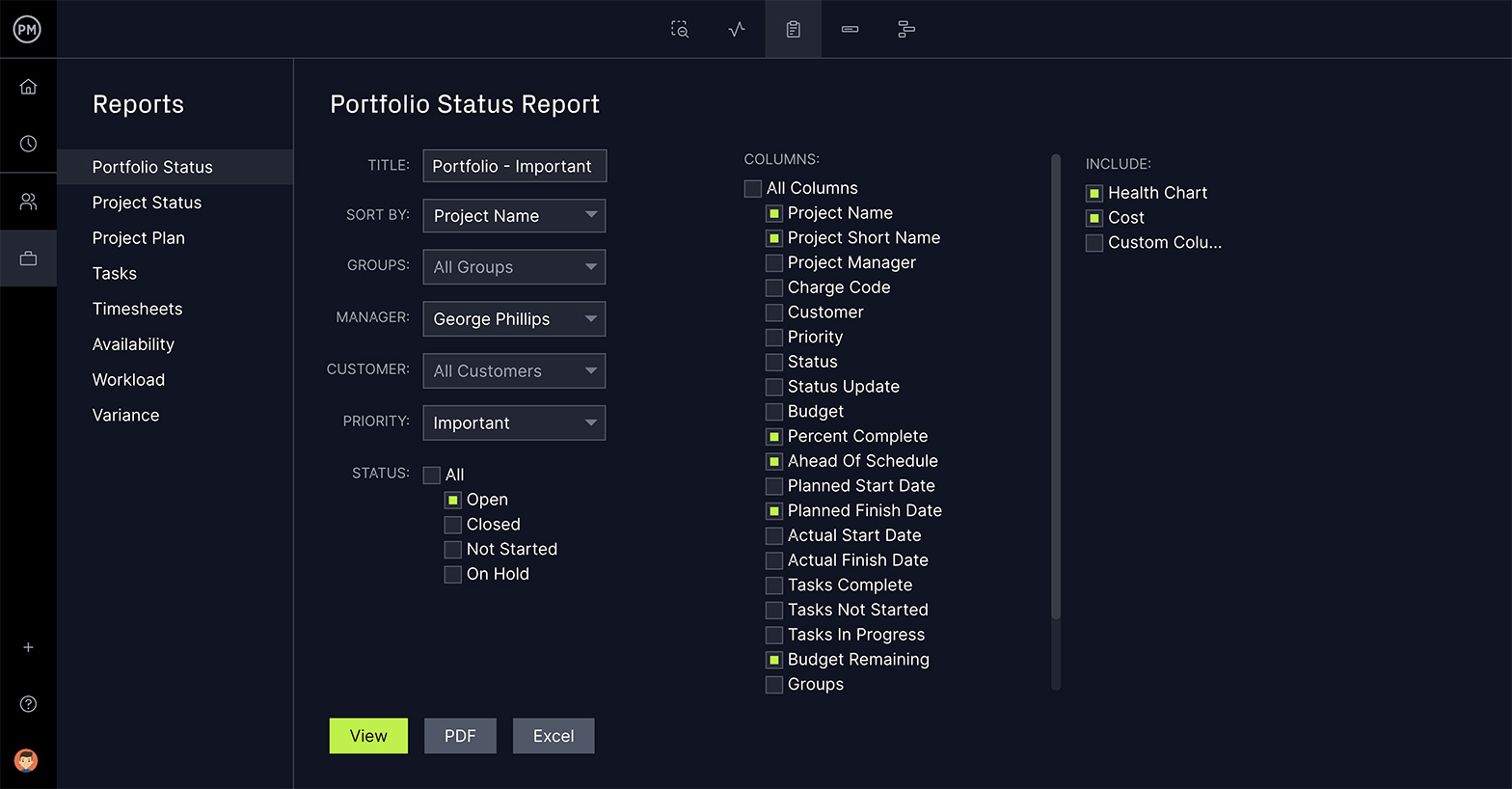What Is Agile Project Management?
Agile project management is an iterative approach that consists of delivering a project through short time cycles called sprints where agile teams plan and execute project tasks. These sprints allow agile project management to pivot and respond to change, hence the name agile. Agile project management is highly adaptable and allows you to adjust the project plan as you go rather than following a linear, traditional project plan.

Get your free
Agile Sprint Plan Template
Use this free Agile Sprint Plan Template to manage your projects better.
Get the Template
Managing agile projects requires the right tools. But what happens if management is using waterfall tools while their teams are executing work in an agile environment? You need an agile project management software that’s compatible with waterfall and other methodologies.
ProjectManager is cloud-based work and project management software that has multiple project views that allow anyone to work how they want. Managers can plan with Gantt charts while teams can manage backlogs and plan sprints on kanban boards. All project views are updated in real time so you’re always working with one source of truth. Get started with ProjectManager for free today.

History of Agile
Agile project management came about as development teams worked towards getting products to market faster. The waterfall methodology, which identifies a problem and plans a solution, forces teams to stick to the scope of work that was defined at the beginning of the project. But when executing a project, things change.
Frustrated developers started to introduce new methods, such as Scrum, rapid application development, extreme programming, DSMD, features-driven development and pragmatic programming, all of which were more flexible and required less overhead planning. This led to agile project management, which was codified in the spring of 2000.
At that time, 17 software developers started what would become agile project management, and a year later, a manifesto was drafted. The Manifesto for Agile Software Development, or Agile Manifesto for short, laid out four key values and 12 agile principles. Since then, agile has spread. Once only used in software development, now agile project management has found a foothold in marketing/advertising, construction, event planning, product development and finance-related companies.
Agile Core Values
As noted, agile project management has four core values that were developed when the Agile Manifesto was written:
- Individuals and interactions over processes and tools
- Working software over comprehensive documentation
- Customer collaboration over contract negotiation
- Responding to change over following a plan
It’s clear to see the changes that agile project management implemented over the traditional project management methodologies. First, the individual is more important than the process. Second, while documentation is important, delivering working software means giving developers what they need. Third, the customer must be involved throughout the project in order to meet their needs, and fourth, value is the driver and if that means changing plans, so be it.
The 12 Agile Principles
Also codified during the writing of the Agile Manifesto were the 12 agile principles. These in tandem with the four core values provide a roadmap that every agile project management team follows.
- Our highest priority is to satisfy the customer through early and continuous delivery of valuable software (or whatever else you deliver).
- Welcome changing requirements, even late in development. Agile processes harness change for the customer’s competitive advantage, unlike waterfall.
- Deliver projects frequently, from a couple of weeks to a couple of months, with a preference for the shorter timescale.
- Coordinating team members must work together daily throughout the project.
- Build projects around motivated individuals. Give them the environment and support they need and trust them to get the job done.
- Face-to-face conversation is the most efficient and effective method of conveying information to and within different teams.
- The final product is the primary measure of progress.
- Agile processes promote sustainable development,. All stakeholders should be able to maintain a constant pace indefinitely.
- Continuous attention to technical excellence and good design enhances agility.
- Simplicity—the art of maximizing the amount of work not done—is essential.
- The best architectures, requirements, and designs emerge from self-organizing teams.
- At regular intervals, the team reflects on how to become more effective, then tunes and adjusts its behavior accordingly.
While agile project management is iterative and adopts change, it always follows the above four core values and 12 guiding principles. These are not rules but instead a framework that holds an agile project together.
Key Elements of Agile Project Management
Just because agile project management is about change and getting your product to market faster doesn’t mean there aren’t specific components that every agile project shares. The following are all part of an agile approach to project management.
User Stories
A user story is the description of a task or work request. It has just enough information for the team to accurately estimate how much effort is required to complete it. This description is written from the user’s point of view, explaining their goals.
Sprints
A sprint is a short iteration that lasts usually 1-3 weeks. Teams work on the tasks that they decided on during the sprint planning meeting. When the sprint is over, the product is reviewed and necessary adjustments are made in further sprints.
Daily Standup Meetings
The standup meeting is a daily occurrence in agile project management. It’s a short meeting, often referred to as a daily scrum meeting, in which everyone on the team makes sure they’re on the same page. It’s called a standup meeting as everyone is standing, which helps keep the meetings brief.
Agile Board
An agile board is also referred to as a kanban board or scrum board and is used to track the project. It can be a whiteboard or a kanban board software, which is part of most project management software solutions. This shows where tasks are in the production cycle.
Sprint Planning
Sprint planning is that part of the scrum that kicks off a sprint. It’s during the sprint plan that the team meets to discuss what can be delivered in the upcoming sprint and how that work will be executed. It’s a collaborative process that involves the entire scrum team.
Sprint Review
The sprint review occurs at the end of the sprint. The scrum team meets to review the work they completed during the scrum and decide what additional changes are necessary. These changes are then incorporated into future sprints.
Sprint Retrospective
A sprint retrospective is the last thing done in a sprint, usually after the sprint review. It includes the entire scrum team and the product owner. The team will look over the sprint and identify what worked and what didn’t, providing solutions to improve the process.
Backlog Grooming
Backlog grooming is a meeting in which the backlog of work is reviewed by the scrum team, product managers and product owners. This is when they prioritize the work to make sure that everything is updated and ready for upcoming sprints.
Burndown Chart
Burndown charts help agile project management teams keep track of the tasks that have been done and the time they have left to execute the remaining work. While a burndown chart is traditionally a visual tool, it can also be used to list tasks and their percent complete.
Burnup Chart
A burndown chart and a burnup chart are almost identical, but there’s one key difference. Burndown chart keeps track of the remaining work by removing user stories from the vertical axis as they’re completed while the burnup chart adds user stories to the vertical axis as they get done.
ProjectManager for Agile Project Management
ProjectManager is work and project management software that connects hybrid teams on a collaborative platform. Whether you’re working strictly in an agile environment or a hybrid model, our tool has multiple product views and a single source of truth so no matter where or how you work, we keep you connected.

Agile teams prefer the kanban board to manage their backlog and plan sprints, but other departments can also collaborate on task lists, calendar views and more. Executives could work in a waterfall methodology and can use our Gantt or sheet view to see the project through a more familiar lens. Everyone can use the agile product roadmap to get an overview of the entire project as it pivots from sprint to sprint.

Scrum teams are self-directed but that doesn’t mean the product owner isn’t monitoring progress. Our real-time dashboard automatically gathers data from the sprint and displays it across six metrics in easy-to-read graphs and charts. There’s no setup required as with other lightweight tools, allowing you to get a status report at your fingertips without getting in the way of your team.

If you want to go deeper into the data, our one-click reports on everything from time to costs and more can be created quickly and easily. They can also be filtered to show only the data you want and shared with stakeholders to keep them updated.
Agile Project Management Training Video
Agile is a good approach to use for many projects. Many marketing teams, for example, are using agile in their production planning. In this video, Devin Deen gives you an overview of agile project management in just 3 minutes—after, he offers up the history of the agile approach.
Thanks for watching!
Agile is all about speed and collaboration. Our customized workflows and task approval help your team focus by removing the busy work while controlling who can update the status of a sprint. Our software is collaborative to the core. Teams can comment, share files and stay updated with email notifications and in-app alerts. Get started with ProjectManager for free today.

